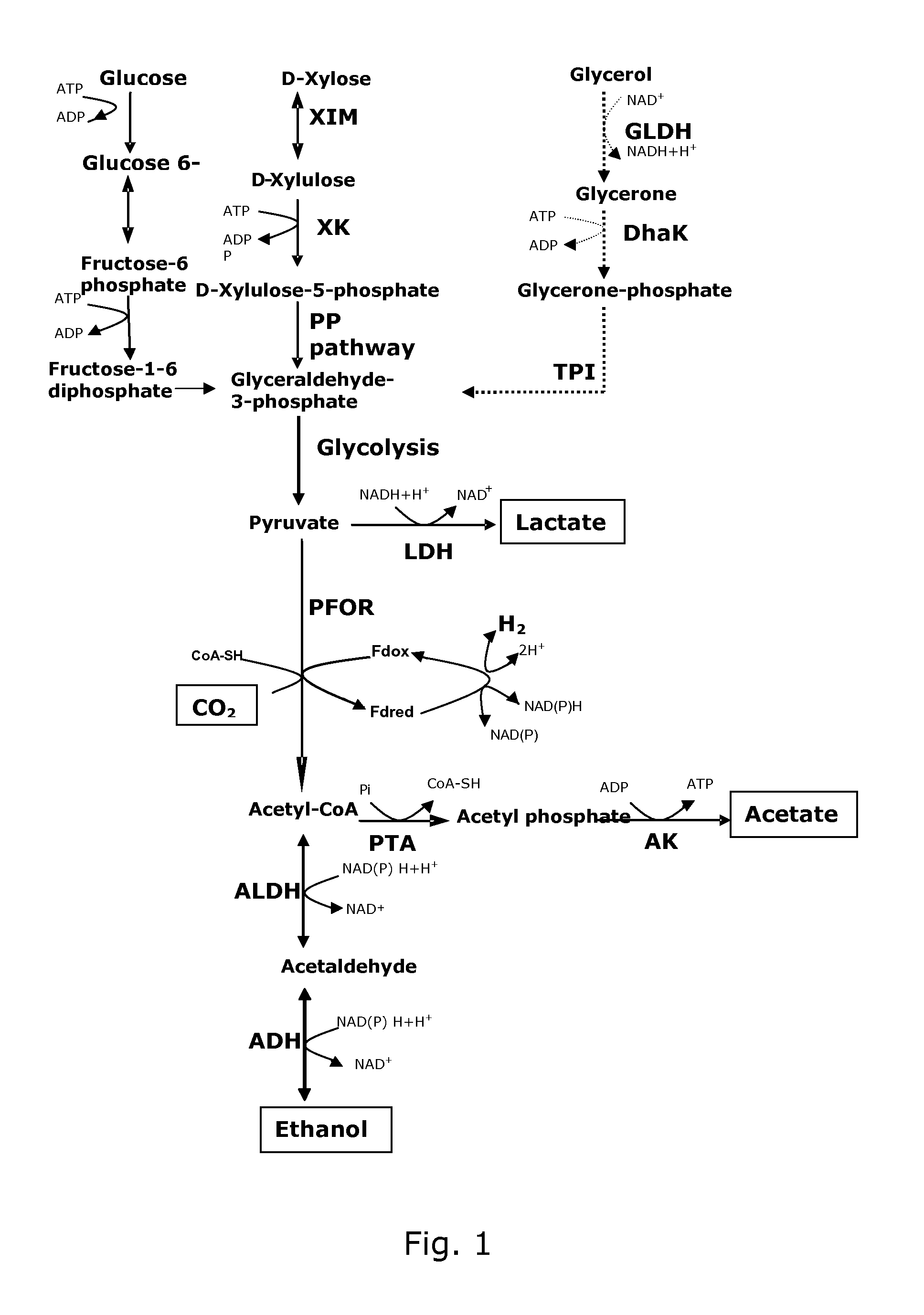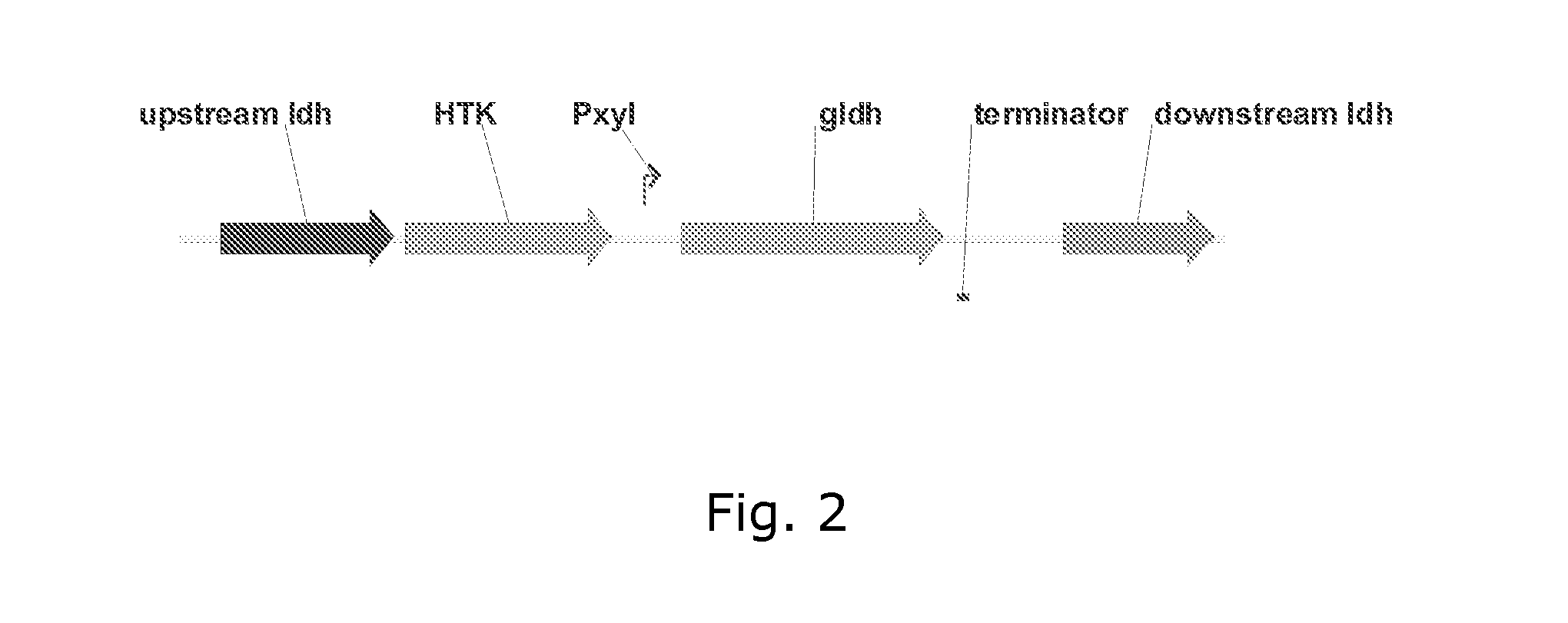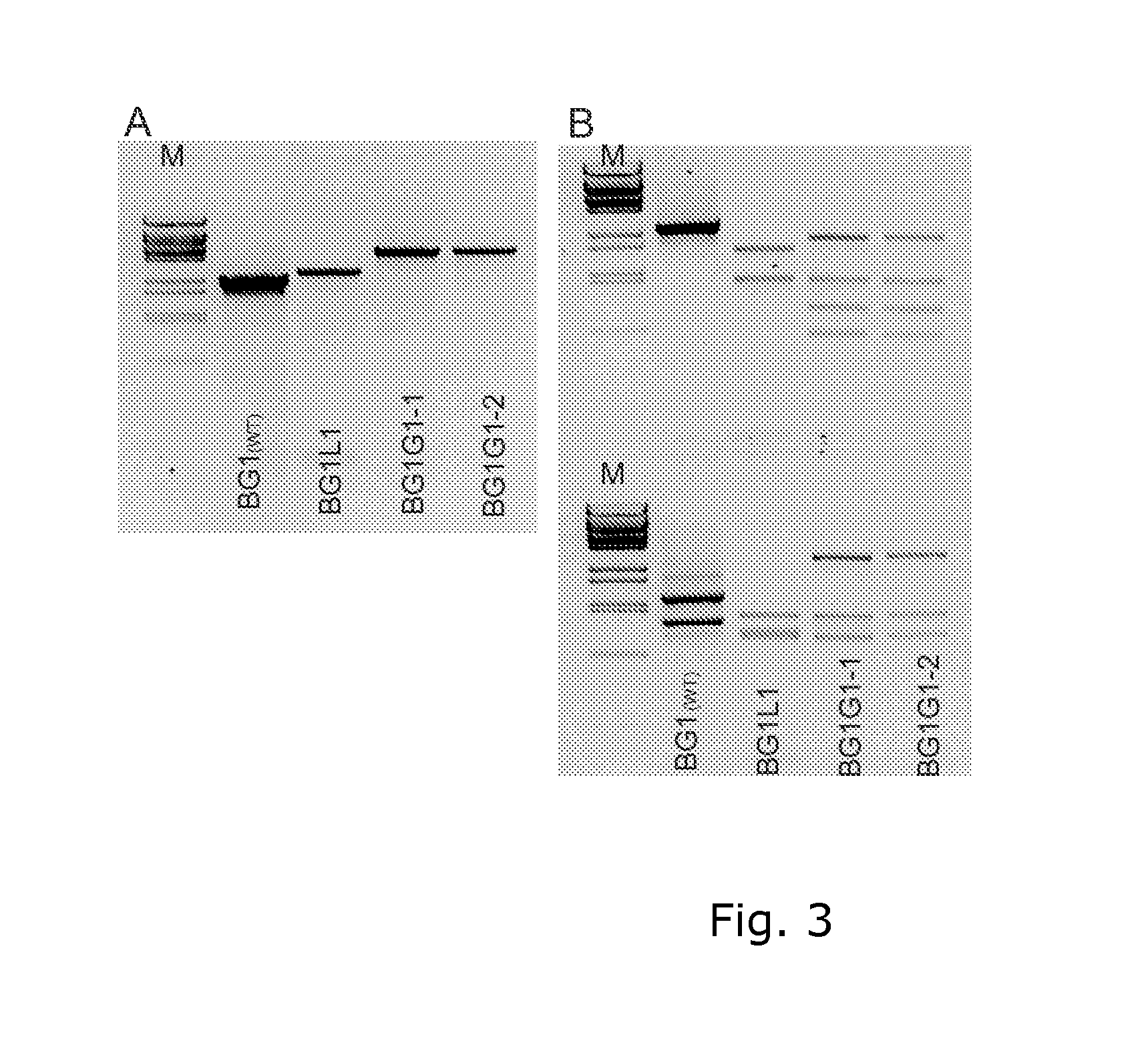Increased ethanol production in recombinant bacteria
a technology of ethanol production and recombinant bacteria, applied in the field of recombinant bacteria, can solve the problems of inapplicability of thermophilic organisms, risk of contamination, and limitations of organisms
- Summary
- Abstract
- Description
- Claims
- Application Information
AI Technical Summary
Benefits of technology
Problems solved by technology
Method used
Image
Examples
example 1
Construction of BG1 G1
[0095]The lactate dehydrogenase of BG1 was replaced by a kanamycin resistance gene and a glycerol dehydrogenase from Thermotoga maritima using the fragment shown in FIG. 2. The resulting clones were checked by PCR using primers annealing outside the region using for homologous recombination. In this way, ldh loci in which no recombination have taken place will also be amplified although the fragment will be of different length (FIG. 3A). The PCR fragments obtained were digested with the restriction enzymes EcoRI and PstI (FIG. 3B). The resulting fragments were found to be of the expected lengths, showing that pure correct clones had been obtained. To further confirm the identity of the clones, the PCR products were sequenced. The sequences were identical to the predicted sequences of the recombinant clones.
[0096]To confirm that a glycerol dehydrogenase had indeed been inserted under the control of the xylose isomerase promoter Pxyl, studies of glycerol dehydrog...
example 4
Optimization of Glycerol Concentration
[0101]FIG. 6 shows the ratio of ethanol to acetate produced in batch experiments with two independent clones of BG1G1 using xylose as carbon source and with varying concentrations of glycerol. As can be seen, the highest ethanol yields are obtained with glycerol concentrations from approximately 1 to 9 g / L of glycerol in the medium. At higher concentrations, lower ethanol yields are seen, probably due to stress caused by shortage of NAD+, which is necessary for glycolysis.
example 5
Growth on Wet-Oxidized Wheat Straw
[0102]To test if BG1G1 was able to grow in the harsh conditions of wet-oxidized wheat straw (WOWS), batch experiments with up to 10% dry matter WOWS were performed. BG1G1 was able to grow at all concentrations of WOWS, showing that the strain had maintained the ability of BG1 to produce ethanol at high yields in this material. The highest ethanol to acetate ratio was 9.5 g / g.
PUM
| Property | Measurement | Unit |
|---|---|---|
| temperatures | aaaaa | aaaaa |
| temperature | aaaaa | aaaaa |
| temperature | aaaaa | aaaaa |
Abstract
Description
Claims
Application Information
 Login to View More
Login to View More - R&D
- Intellectual Property
- Life Sciences
- Materials
- Tech Scout
- Unparalleled Data Quality
- Higher Quality Content
- 60% Fewer Hallucinations
Browse by: Latest US Patents, China's latest patents, Technical Efficacy Thesaurus, Application Domain, Technology Topic, Popular Technical Reports.
© 2025 PatSnap. All rights reserved.Legal|Privacy policy|Modern Slavery Act Transparency Statement|Sitemap|About US| Contact US: help@patsnap.com



